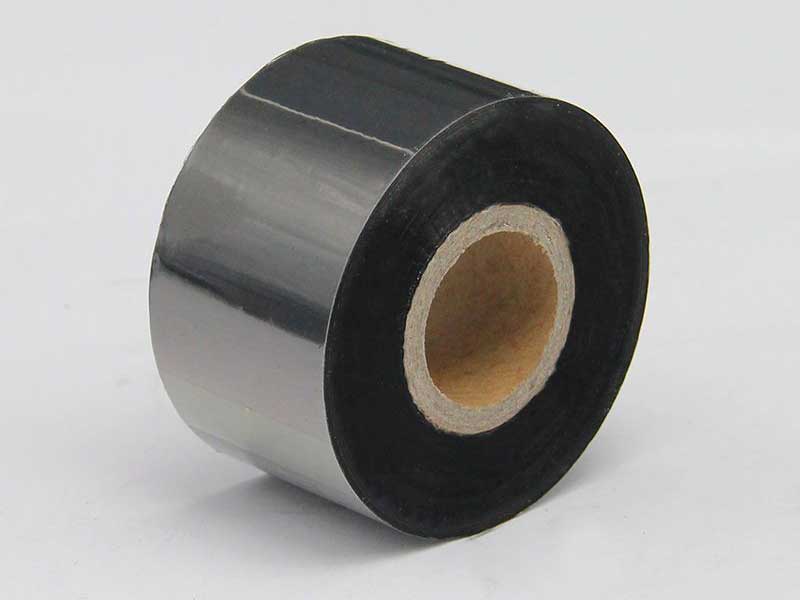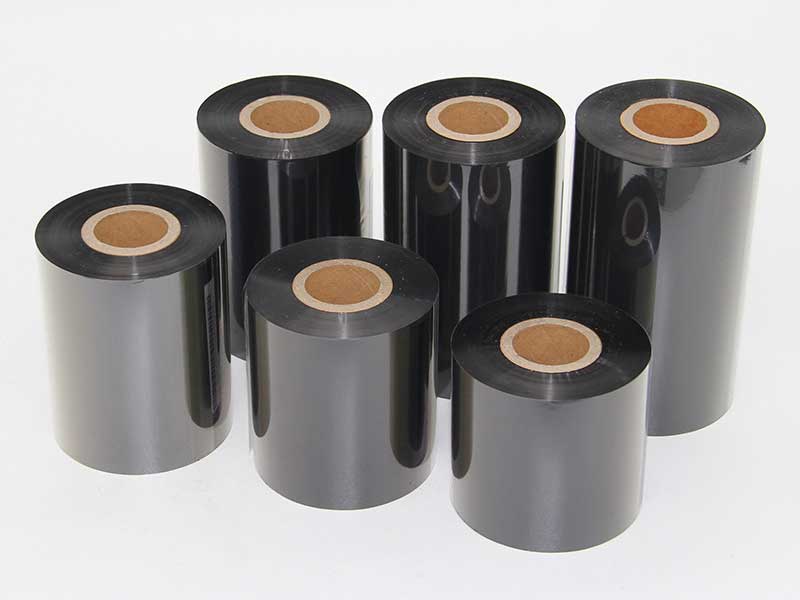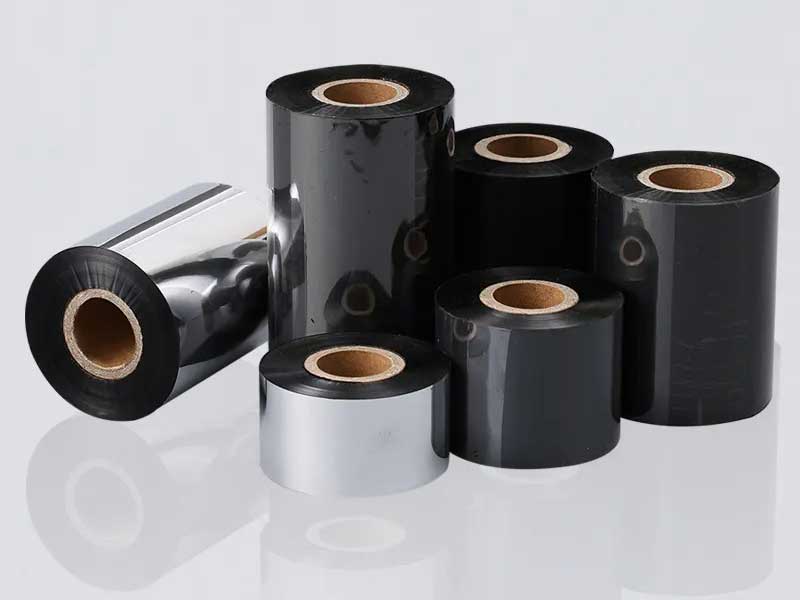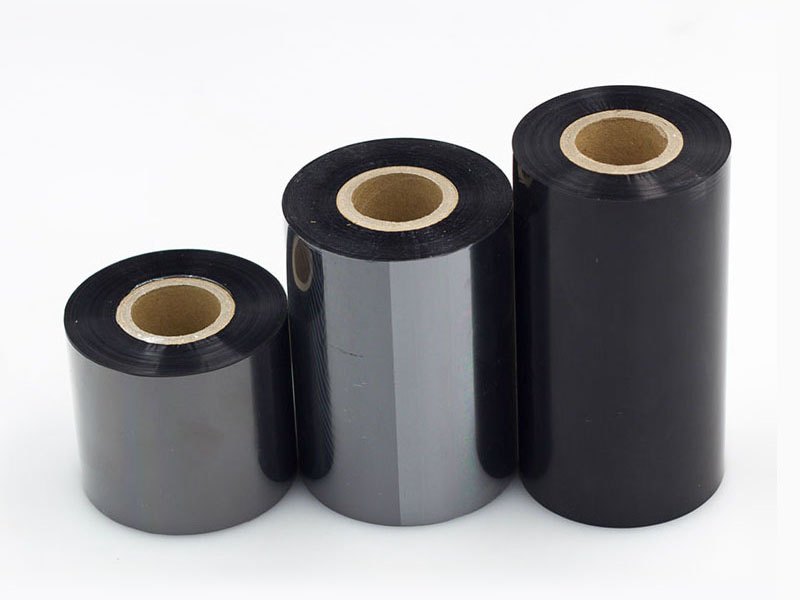Ribbon slitting machine is a key equipment in the production process of ribbon (thermal transfer ribbon), which is mainly used to cut the wide original ribbon into narrow rolls of different widths to meet the needs of printers, labeling machines and other terminal equipment. Its refined operation directly affects the quality, performance and yield of the ribbon. The following is a detailed explanation of the core functions of the ribbon slitting machine and its role in fine processing:

1. The main functions of the ribbon slitting machine
1. Precise slitting
◦ High-precision cutting: controlled by CNC system or servo motor, the slitting width accuracy can reach ±0.1mm, which can meet the needs of different printer models (such as the common width of label printers 6mm, 12mm, 24mm, etc.).
◦ Multi-specification slitting: Support single-roll multi-knife slitting, and complete multiple ribbon slitting of different widths at one time to improve efficiency.
2. Tension control
◦ Constant tension system: Through magnetic particle brake or pneumatic tension control, the tension of the ribbon is stable during the slitting process, and the breakage, wrinkle or edge burr caused by uneven tension is avoided.
◦ Automatic deviation correction: Equipped with photoelectric deviation correction device, the position of the ribbon can be adjusted in real time to prevent waste caused by deviation.
3. Surface protection
◦ Non-contact slitting: Uses sharp round knife or ultrasonic cutting technology to reduce friction damage to ribbon coatings (wax-based, resin-based, or hybrid-based) and protect thermal transfer layer integrity.
◦ Dust removal and cleaning: Built-in static eliminator or dust collection device to remove debris generated during the slitting process and avoid polluting the surface of the ribbon.
4. Automate operations
◦ Automatic winding: The winding tension is controlled by PLC to ensure that the slitted ribbon is wound neatly without loosening or stacking.
◦ Intelligent detection: Integrated sensors detect ribbon defects (such as bubbles, scratches), real-time alarms and mark defective segments.
5. Adapt to a variety of materials
◦ Ribbons with different substrates (e.g. PET film, cotton tape) and different adhesive types can be processed, and the parameters can be adjusted to avoid sticking or delamination during slitting.

Second, the key technology of refined operation
1. Slitting tool selection
◦ Round blade: suitable for high-precision slitting, long life, and regular maintenance of sharpness.
◦ Ultrasonic knife: No mechanical pressure, suitable for ultra-thin ribbons or sensitive coatings, reducing thermal damage.
2. Dynamic parameter adjustment
◦ Adjust the slitting speed (usually 10-50m/min), tension and tool pressure in real time according to the thickness and hardness of the ribbon to avoid edge warping or coating peeling.
3. Environmental control
◦ Operate in a dust-free workshop or a constant temperature and humidity environment to prevent temperature and humidity changes from affecting the physical properties of the ribbon.

Third, the application value of the ribbon slitting machine
1. Improve the yield rate
◦ Reduce slitting loss (edge waste is controlled within 1%) and reduce production costs.
2. Guarantee quality
◦ Ensure that the ribbon is smooth and free of burrs after slitting, and it is not easy to break the tape and jam tape during printing, prolonging the life of the printer.
3. Flexible adaptation to the market
◦ Quickly respond to customized customer needs (such as special widths, small batch orders) to enhance competitiveness.
Fourth, selection and operation suggestions
• Selection points: Select the model according to the ribbon material (wax-based/resin-based), the maximum slitting width (such as 1500mm), and the degree of automation (semi-automatic/fully automatic).
• Maintenance points: Clean the tool regularly and calibrate the tension system to avoid poor slitting caused by passivation of the knife edge.
Through the refined operation of the ribbon slitting machine, enterprises can achieve efficient, high-quality, low-consumption ribbon processing to meet the growing demand for label and barcode printing.
 Long-term reliability maintenance guide for ribbon slitting machines
Long-term reliability maintenance guide for ribbon slitting machines One-Click Operation: How the Convenience of Ribbon Slitting Machines Reshapes Workflows
One-Click Operation: How the Convenience of Ribbon Slitting Machines Reshapes Workflows Ribbon slitting machine: when precision meets user-friendly, the humanistic change of industrial design
Ribbon slitting machine: when precision meets user-friendly, the humanistic change of industrial design The Blade of Precision: How Ribbon Slitting Machines Become the Invisible Guardians of Print Quality
The Blade of Precision: How Ribbon Slitting Machines Become the Invisible Guardians of Print Quality Beyond Slicing: The Evolution of Ribbon Slitting Machines in the Productivity Revolution
Beyond Slicing: The Evolution of Ribbon Slitting Machines in the Productivity Revolution